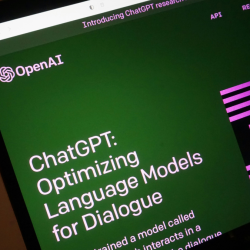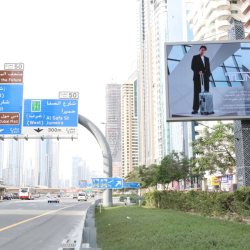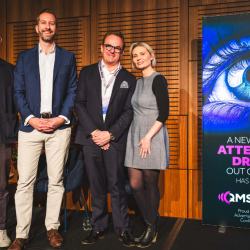Every webinar I join about Generative AI seems to focus on visual creation…
Its ease, the moral dimensions, how to finesse it. But there’s little coverage of the platforms that can help the writers. I’m not disappointed and I’m not surprised. After 30 years of being involved in the world of creativity, I think most brand writing stinks. I’ve been denying it for years, but visual designers are hundreds of times better at producing radical ideas and caring about nuance. They’re experts at making what they’re producing seem human. They deserve their giant, expensive screens and rows of colleagues sitting beside them. The writers deserve their crappy laptop, working all on their own. The visual designers are doing far, far more and they deserve all the help they can get.
The writers? We should go back to school before we expect help. I used to joke about how the definition of every brand’s tone of voice included the adjective ‘human’ — like, which brand wouldn’t want to sound human? But it seems like no brand writer (or was it the commissioning client?) really listened. They wanted copy that sounded just like copy. However bad that sounded. Banks wanted to sound like banks. However bad banks are. Even Revolut, which adopted a ‘radical brevity’ approach to differentiate itself from the vomit-on-the-page and craven £200 joining offer that trad banks adopted, still sounds inhuman.
What’s going on? Some part of the problem is that most people think that if the grammar is good, the writing is ‘good’. Get the grammar right and they can’t be criticised. A bigger part of the problem is a kind of macho adherence to being bullet-proof, invulnerable, all corporate and perfect.
So, imagine a spectrum. A black line extends across the page from left to right. It’s a scale of writing. On the far, far left are those manuals that are never read, not even by the commissioning client. Just to the right of them, are the emails that are read just once, when they are signed off and sent out by a brand manager. Just to the right of those emails? All those LinkedIn posts that get written and never even scratch up a Like, let alone a comment. A little further out, Annual Reports. Read by a few people, but only because they have to.
What’s going on down at that end of writing?
I feel the writer is overwhelmed. By the burden of knowing so much or by having so much to write about. But it is a spectrum. Somewhere in the middle are Innocent Smoothies and Mailchimp’s users’ guide. The former now sounds wearisome; the latter has been lauded beyond its usefulness. But come on, you’ll say, can you imagine anyone wanting to write an Annual Report that non-financial people would want to read? Something that would get quoted in the front sections of newspapers, not the dry money and numbers pages?

That’s what’s been happening on the far right-hand side. Year after year, Warren Buffet puts his name to an Annual Report that sounds distinctly human. Like this ‘excuse’ for investing in something that didn’t turn out quite how they expected: ‘As is the case in marriage, business acquisitions often deliver surprises after the “I do’s.’ And when Elon Musk speaks not everyone likes what he says, but he speaks, ironically, with a more human voice than most CEOs and most brands.
What’s going on at this end of the spectrum? The answer has been around for almost a hundred years. In his 30 million copy best-seller, How to Win Friends and Influence People, published back in 1936, Dale Carnegie’s #1 rule was to Become Genuinely Interested in Other People. Isn’t that the best form of human? Too often, writers are asked to write about the product, not its use. They write for people they don’t know and never stop to imagine. And on the far, far right-hand side are the writers who aren’t burdened by years of writing copy that they were told to make sound more like copy.
There’s a rich seam of human humour in social media. Like the writer for the U.S. National Parks Service Instagram account, who’s quintupled their following with nothing more than a distinctly quirky and wry (i.e. distinctly human) voice. And there are other spaces where a lone voice sounds out and everyone follows: the writer of the Air New Zealand safety videos, which first broke with po-faced seriousness, has inadvertently rewritten every other airline’s safety video subsequently.
A few years ago, I was coaching the writing team of a large UK retailer. One of the writers had graduated with an English degree from Edinburgh just three years previously. I asked him how he was enjoying his job. His reply? ‘I’m now a shelf-stacker of words.’ He was working faster and faster, with less and less individual thought. More and more like a machine.
I found some copy on Tesco’s website recently describing a bar of its chocolate. 50 words was clearly the minimum allowed for a product description, so the writer had written one sentence of 25 words and then repeated it. Word for word. If no one’s going to read it, why bother?
If the machines take our writing jobs, instead of just complementing them as they are with the art directors, then I can’t say we, the writers are to blame. AI presents a crossroads: of how much we want to let it do. But when our own creativity in writing is so limited — and when the Generative AI webinars that do feature writing platforms show how you can specify the tone of voice with far more nuance than most brands’ own tone of voice guides include — we shouldn’t be surprised.
Featured image: Pixabay































